There is no one perfect succulent pot. The truth is most pots and planters will work, but there are advantages and disadvantages to each. Different kinds of pots will create slightly different care needs for your succulents (for example, affecting how often you water).
This guide will help you choose the best pot for your succulents, or help you take an imperfect pot and make it work.
- Choose Drainage Holes: Essential for succulent survival, pots with drainage holes prevent water buildup.
- Right Size Matters: Select a pot that balances growth space without over-accommodating, as both extremes can hinder succulent health.
- Opt for Light-Colored Pots Outdoors: Light-colored pots reflect sunlight, reducing heat absorption and protecting succulents in warm climates.
- Select Porous Materials: Porous materials like clay or terracotta are ideal for succulents, promoting airflow and moisture regulation.
- Adapt Decorative Pots: Utilize the “pot in a pot” method to accommodate succulents in decorative pots without drainage.
Choose A Succulent Pot Drainage Option
If deceased succulents received autopsies, the most common cause of death would probably be drowning. Overwatering a succulent planted in the wrong kind of pot creates a vicious cycle and a path to near-certain death. Luckily, this is an easy problem to avoid.
If you choose a pot with good drainage, you set your succulents up for success. There are a few ways to achieve good drainage.
Pots with Drainage Holes
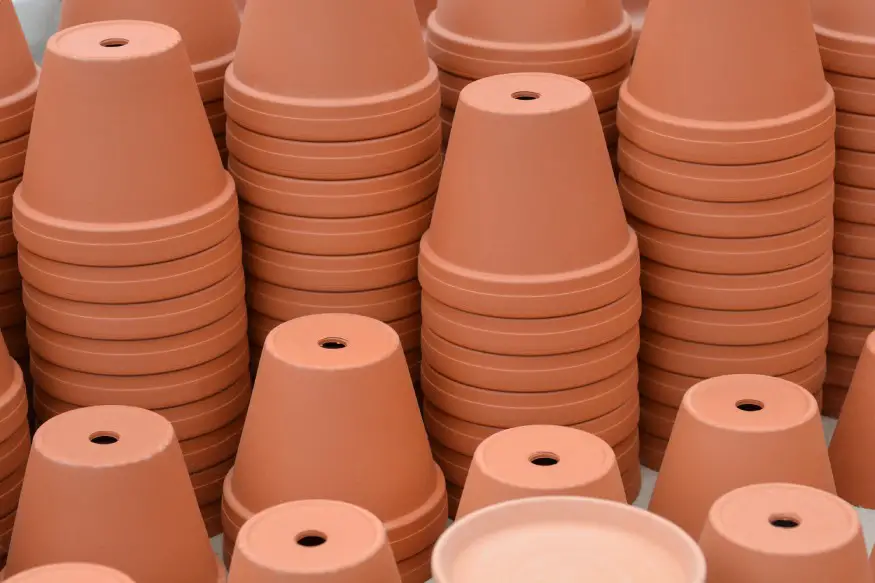
Advantages of Using Pots With Drainage Holes
Succulent pots with drainage holes in the bottom are the best choice for growing healthy succulents. These pots come with at least one hole in the bottom. Typically you use a matching saucer to go under the pot (sometimes attached or separate). The saucer catches any excess moisture after watering.
These pots are ideal for succulents because they allow you to use watering methods that best replicate the rainfall patterns where succulents originate.
Plant Care in Pots With Drainage Holes
Using the right kind of potting mix (loose, well-draining, high in gritty material) in a pot with a drainage hole stops water from accumulating in your pot.
When you use that soil and let it dry out before re-watering, you replicate the succulent’s natural environment.
When you do water, use the ‘Soak and Dry’ method or the ‘Dunk and Soak’ method.
Avoiding Drainage Hole Problems
There are a few common mistakes people make when using pots with drainage holes, but they’re easy to avoid.
First, make sure to use a saucer, especially if the pot will sit on a shelf, table, or floor made of wood. Even after the pot is no longer dripping, moisture will continue to evaporate through the hole, which will damage your wood.
Second, if you use an unglazed clay saucer, be forewarned that enough moisture can travel through unglazed clay to damage wood in the same way as if you didn’t use one at all. We recommend using plastic, glass, metal, or glazed saucer. If you use an unglazed clay saucer, place the saucer on a trivet.
Third, after watering your plant, make sure water doesn’t accumulate in the saucer. Some plants don’t mind this, as the water is eventually absorbed or evaporates, but succulents don’t want their roots to stay wet.
Note: If you notice any water accumulating in the saucer after you water your succulent, dump it out right away.
Finally, check the drainage hole occasionally. If the hole isn’t very big and your potting mix includes large enough pieces of gravel, pumice, or perlite, a chunk could block the drainage hole, trapping too much water in the pot after watering. If this happens, you can usually dislodge it by poking it into the pot and out of the direct path of the drainage hole.
Drilling a Drainage Hole In a Pot
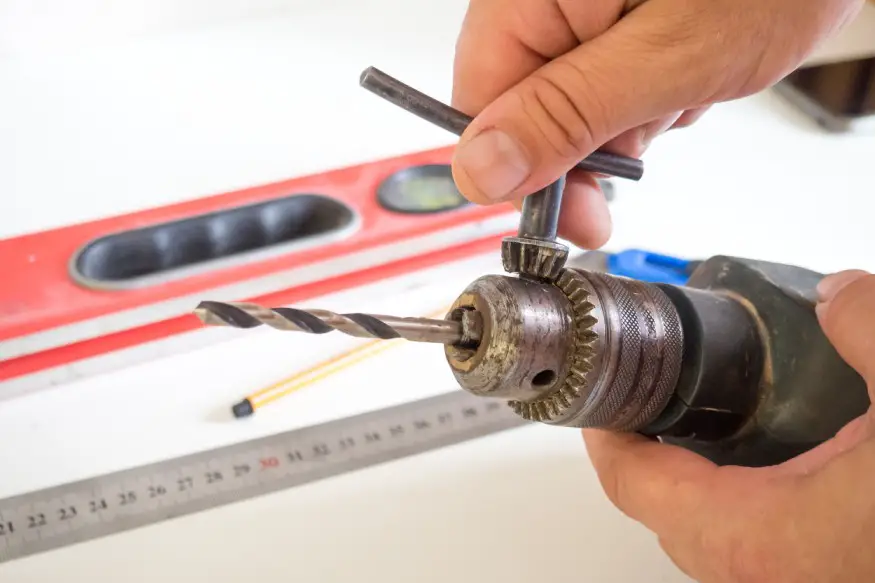
If you’re handy with light power tools, you could drill your own hole in the bottom of your pot. You’ll need to use a power drill (or possibly a Dremel tool).
Note: Drilling a hole in the bottom of a pot can be tricky. If you aren’t careful, and sometimes even if you are, the pot can crack.
That means you probably shouldn’t try this on the irreplaceable heirloom antique flowerpot you inherited from your great grandmother, but it’s a great option for pots you buy at the second hand store.
Here’s how you can drill a hole in the bottom of your pot.
- It’s important to use the right kind of drill bit. Ideally, use a diamond tipped drill bit (these are much less expensive than you’d expect) or another drill bit specifically designated for use on ceramic tile or glass. Some bits are shaped like an arrow, but to make a bigger hole you can use a diamond tipped hole saw (a hollow bit, shaped like the end of a straw).
- Mark the center of the bottom with a sharpie, then pour a little bit of water on the bottom of the pot. The water helps avoid overheating.
- Start by setting the drill to a slow speed, and hold the drill at an angle initially, just to scratch a little divot in the bottom of the pot in the marked spot. Skipping this step can create a problem when you drill the hole; without an initial divot, the saw will want to slide around instead of going straight in.
- Create the divot slowly, at an angle, then hold the drill upright and drill all the way through at a normal speed, applying only light pressure.
The Pot-in-a-Pot Method
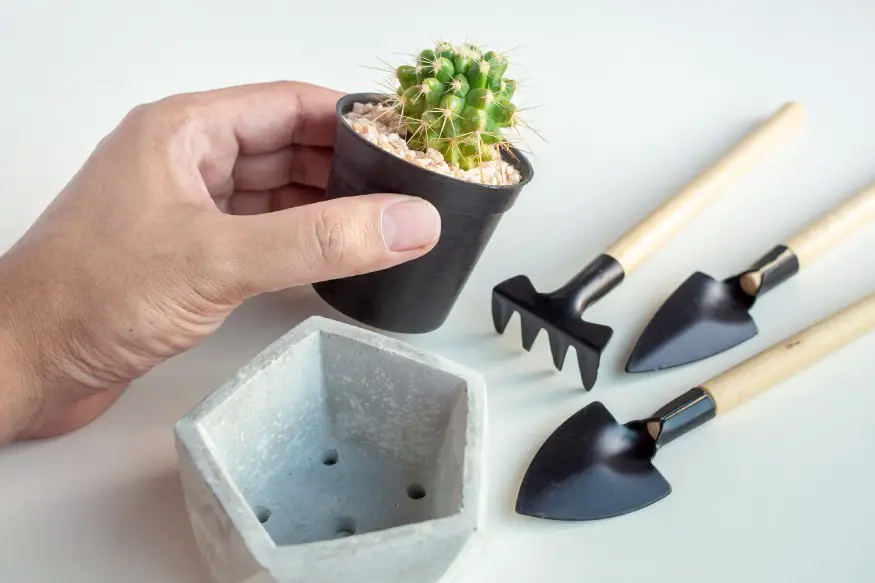
If your pot is too precious to risk breaking it, or you don’t want to use power tools, you can use the pot in a pot method.
This means that you won’t actually plant your succulent in the beautiful pot. Instead, you’ll plant it in a cheap plastic pot with a diameter that is almost as wide as the decorative pot, and place the plastic pot inside the decorative pot.
Note: When you water, you remove the plastic pot and water your succulent in the sink. Let it drain thoroughly in the sink, then return the plastic pot to its decorative nesting pot.
For this method, I usually use the plastic pots I’ve saved when buying houseplants or vegetable starts at the garden store. It’s a great way to reduce plastic waste by reusing plastic that would otherwise end up in a landfill.
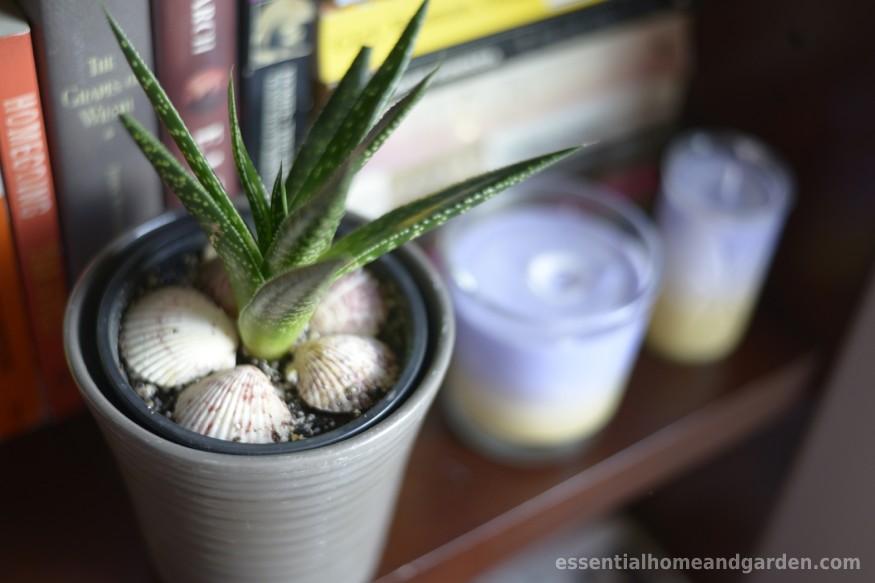
Sometimes my plastic pot with the right diameter isn’t as deep as my decorative pot. In that situation, I fill the bottom of the decorative pot with enough gravel to bring the level of the plastic pot up in line with the top of the decorative pot.
If you do use the pot in a pot method, even if you use gravel to raise the plastic pot, it is important not to let water accumulate in the decorative pot after watering. Like the saucer under a pot with drainage, the decorative pot will accumulate excess water, but, unlike a saucer, you won’t see it. It can easily grow mold.
Make sure your plant is fully drained before returning it to the decorative pot after watering.
Succulent Pots Without Drainage
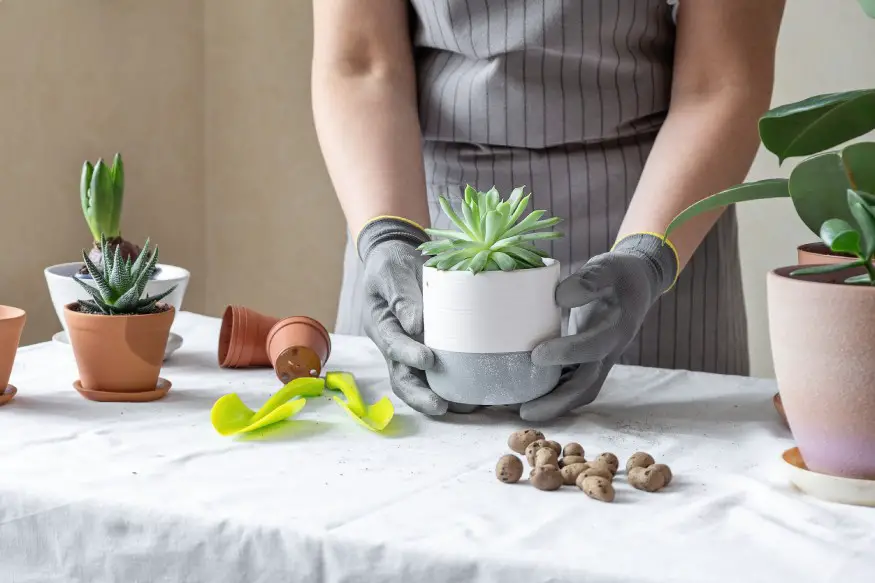
Sometimes advice is “do as I say, not as I do.” The truth is that even I, knowing better, have occasionally planted my succulents directly into pots with no drainage. Using a pot without drainage does not guarantee the death of your succulent. It simply means you need to be much more attentive to your plant.
Note: When using a pot with no drainage, you need to have a clear understanding of how much water to add.
If there is no drainage, your goal is to add precisely the water needed to saturate the soil after the water has wicked through the soil’s organic material evenly. If some excess water flows to the bottom of the pot, but there are still dry patches in the middle, the water will eventually migrate upward to even out the hydration.
One method to do this is watering by weight.
Watering By Weight
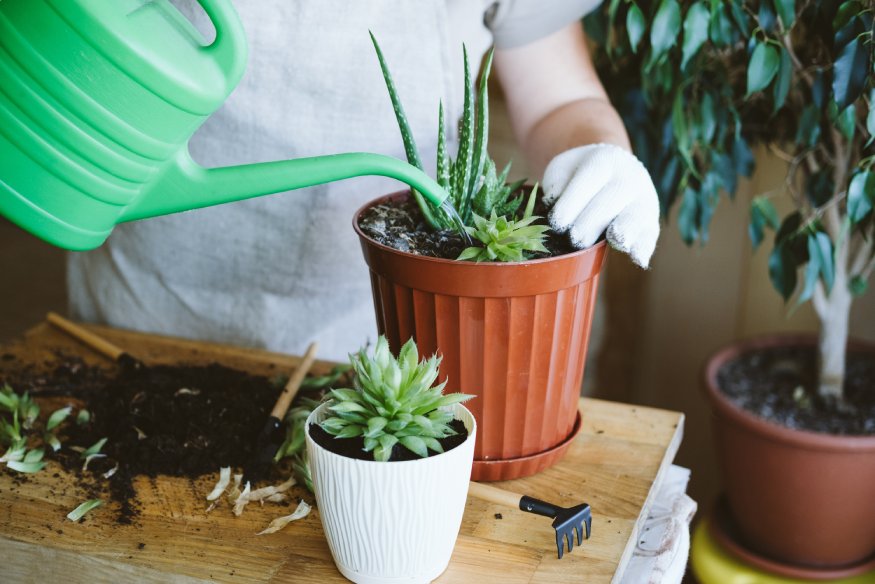
Measuring out the same volume of water every time, after using a process of trial and error to determine how much you need, isn’t a bad idea. But the truth is, watering is as much about how often as it is about how much.
Rather than measuring the water in volume, focus on weight. Before planting your succulent, fill your planter with bone-dry potting soil and determine the weight (either using a scale or just getting a feel for it by lifting the pot).
Then, fill the succulent planter with moist but not overwatered potting mix. You should not be able to produce much if any water if you squeeze a handful of the soil in your fist. Then plant the succulent, and check the weight again.
From then on, use the initial dry weight as your sign that the plant needs watering. Use the second weight to know when you’ve added enough water to the pot. Keep in mind the weight will increase overtime as the plant grows.
Note: Succulents prefer a pot with drainage, but if the rest of the conditions (light, temperature, pest control) are good and you water correctly, they’ll probably be fine.
The Right Shape and Size for your Succulent Pot
As long as you give your succulents the growing conditions they need to thrive, like good drainage and sun exposure, they probably won’t mind the shape of your pot. However, pot size and shape can make a difference in how well your succulents grow.
There is a fair bit of wiggle room, but in general succulents want a Goldilocks pot: not too big, not too small.
Small or Short Pots and Planters

Pots that are too small will suppress your succulent’s growth. A pot that is too narrow will become overcrowded, especially if it is a type of succulent that creates offsets, like the fairy castle cactus.
A pot that is too shallow will suppress root growth, limiting the growth of your succulent aboveground. If you grow a tall succulent in a shallow pot, it may become so top-heavy that it falls over because the roots are too shallow to hold it securely.
Note: Typically you want to use standard proportioned pots to encourage root growth and stem growth, but not always. Small, shallow pots are sometimes used strategically for succulents.
For example, if you want to grow an elephant bush, Portulacaria afra, as a bonsai, you can use a shallow bonsai planter. Bonsai planters are short and limit vertical root growth, but they typically come with wires or other devices to help secure the shallow-rooted plant in place when it becomes top-heavy.
Shallow, wide-mouth pots and planters are also great for propagating cuttings from your succulents. For more on this, check out our complete guide to succulent propagation.
Large Pots and Planters
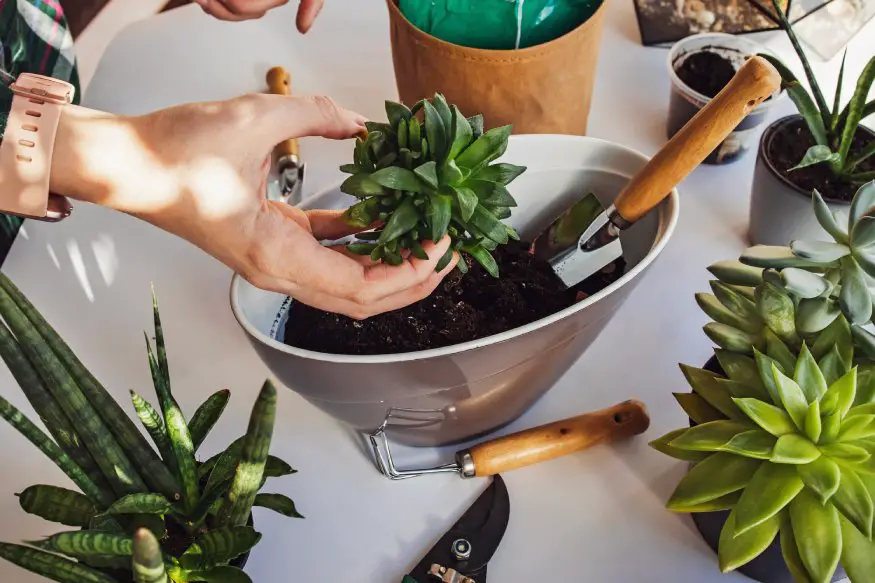
A pot that is too big comes with its own set of problems. The larger the pot, the longer it will take to dry out between waterings. That can create a risk of root rot and other problems.
However, the opposite problem can also happen. If you plant a small succulent in a particularly tall flower pot and let the pot dry out fully before watering, the plant’s roots can’t reach the bottom, which dries last, so the plant may not have access to water frequently enough.
Note: If you have a particularly tall pot that you really want to use for succulents, we recommend the “pot in a pot” method and filling the bottom of the pot with rocks. By doing so, you can ensure that the plastic pot filled with soil is the correct proportion for the plant.
If you have a particularly wide planter rather than a tall one, your best bet is to use it to plant an arrangement of multiple succulents.
Choose a Pot Color
You might think the color of the pot makes no difference to a plant, but that is only true indoors. Outdoors, particularly if your plant is in direct sunlight, the color (along with the material) does have an impact on your succulents health. Specifically, a dark matte pot will absorb a lot more light (converted to heat) than a glossy light-colored pot.
Depending on your climate, one may be preferable to another. If you live up north, your plants may benefit from a dark pot storing more heat overnight, which will promote growth. If you took that same pot and plant and moved it to a spot with direct sunlight in Arizona, the excess heat absorbed might be enough to kill the plant.
Choose a Material For Your Succulent Pot
Clay, Ceramic, and Terra Cotta

Clay pots are truly a technology that has withstood the test of time. Anthropologists have dated the oldest pottery ever discovered to somewhere between 15,000 to 18,000 years ago. Many pots available today are made of the same basic materials.
People get confused sometimes about the differences between “clay,” “ceramic,” and “terra cotta” pots.
Terra cotta is a type of clay pot that is unglazed. Typically, these containers for succulents have a classic rusty coral color, creating a beautiful contrast with green foliage.
Because they are unglazed, terra cotta pots are great for succulents. All unglazed clay pots are porous, meaning that air can travel into the pot to oxygenate the soil, and excess water can be absorbed by the pot, protecting your succulent’s roots. Terra cotta pots are widely available and very affordable, but they can be a bit boring in appearance.
They are heavy, but fairly easy to chip or break. Because these pots absorb moisture, they can break due to freezing weather.
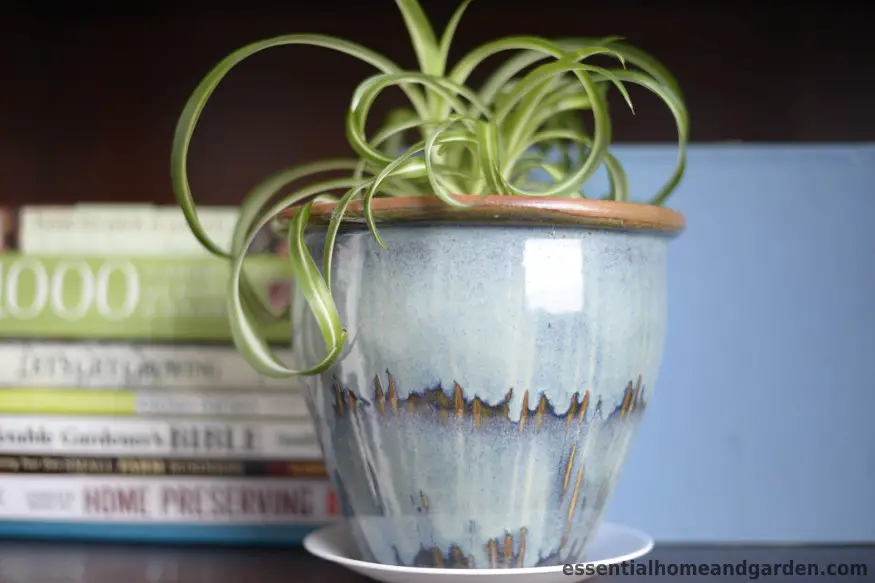
Ceramic pots and planters are also made from clay, but before the clay is fired in a kiln it is coated with a ceramic glaze. When the pot is fired the glaze creates beautiful colors and patterns.
The glazing process also makes the pot less likely to chip or break, but they can still be damaged. Sometimes extreme shifts in heat or cold over time can cause cracking as well. The glaze also means that a ceramic pot will hold water for longer, rather than absorbing excess water like unglazed clay, so be careful not to overwater succulents in a glazed pot.
Plastic
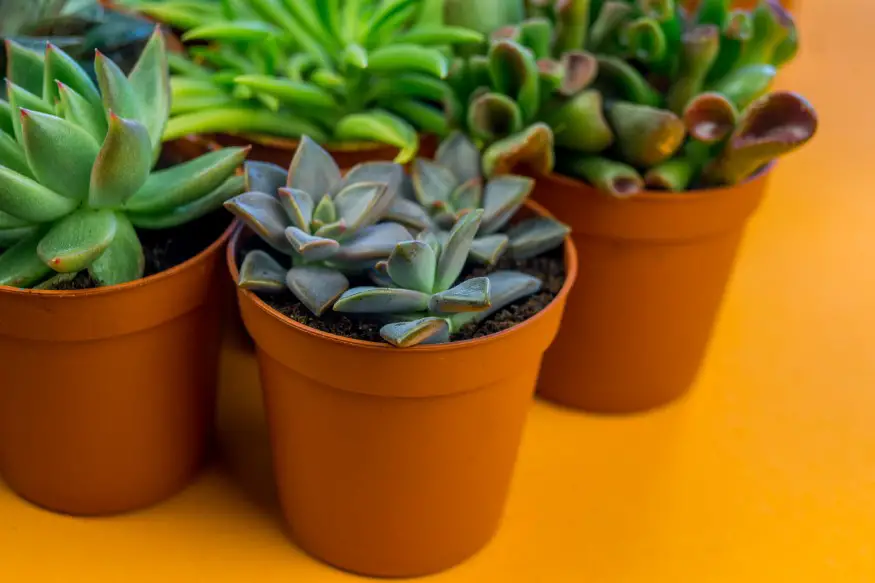
Plastic pots are cheap and widely available. They are lightweight and somewhat durable. Plus, you can get them in different shapes, sizes, and colors.
However, if you keep them outside in the sun and heat, they will become brittle over time. As that happens, chemicals may leach into the soil inside and outside the pot. Whether or not those chemicals will harm your plant is hard to say, but it isn’t ideal. Moreover, you’re adding more plastic to landfills.
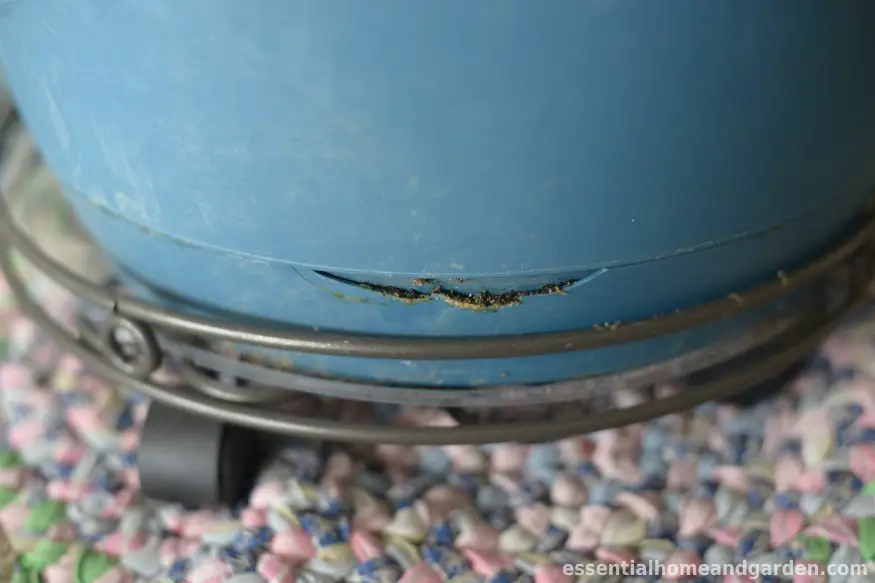
If you want to be more environmentally responsible, always use plastic indoors. And, as much as possible, use secondhand pots.
Fiberglass
One of the newer choices in the flowerpot market is fiberglass. This is made of spun glass mixed with resin. It comes in all different shapes and sizes, and appearances.
They are strong, lightweight, and moderately inexpensive. They are waterproof and non-porous, so look for a planter with good drainage.
Glass

There is nothing intrinsically wrong with glass as a planter material. However, many glass planters are more like terrariums.
They do not typically have drainage holes and can’t be safely modified to add them. They are also fragile and often expensive. The gritty amendments in your potting mix may scratch the glass. Overall, glass is not a good option for succulent planters.
Wood
Wood planters and pots can be attractive ways to display succulents. However, any wood in consistent contact with soil and water will deteriorate.
You can help make them last longer by using the “pot in a pot” method and ensuring the inner plastic pot is very well-drained before returning it to the wooden container.
Metal
Metal is extremely durable and attractive as a pot or planter. However, they often lack drainage holes. Plus, they tend to warm up too much in sunlight so that they can overheat your plant. They are water- and air-impermeable as well.
We recommend against using metal pots for succulents unless you’re using the “pot in a pot” method, indoors, and indirect light.
Creative Succulent Pot Options
Arranged Groups of Mixed Succulents
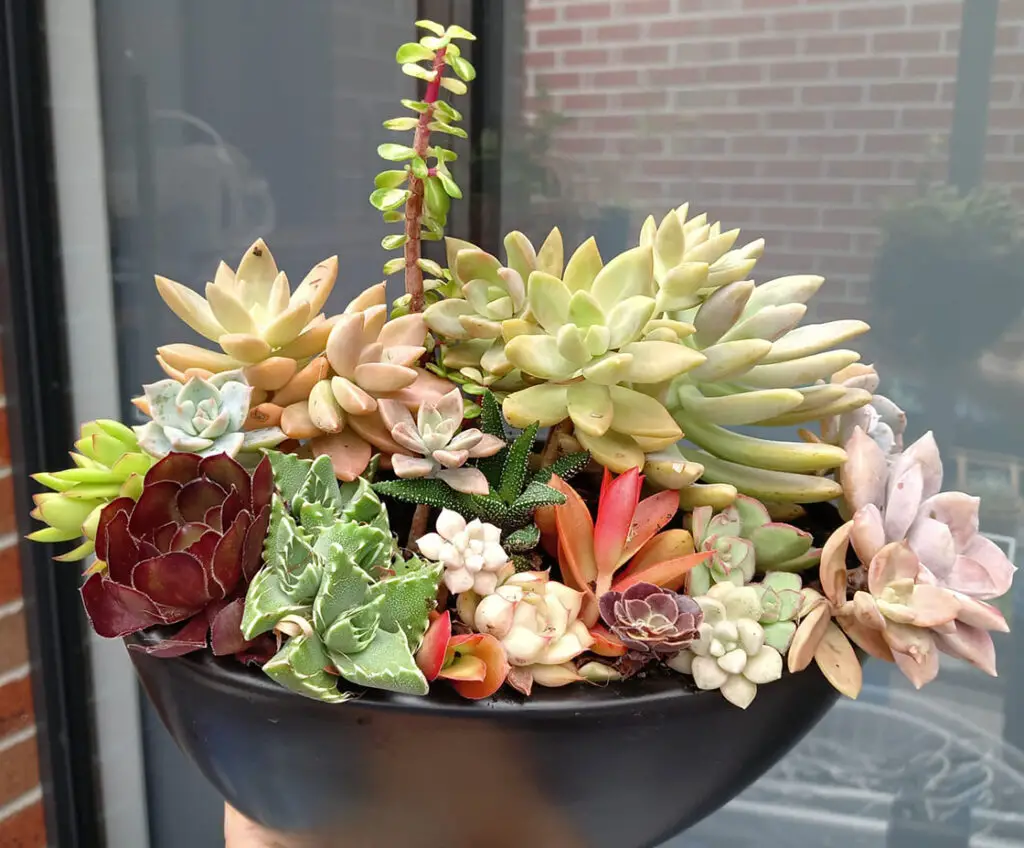
When creating a mixed grouping, the goal is usually harmony through diversity. You want to include succulents in various shapes, sizes, colors, and growth habits (some tall succulents, some succulents that trail downwards over the sides of the pot, etc.).
For example, you might combine a spiky zebra plant, a squat purple lipstick echeveria, and some variegated string of hearts to create a strong vertical.
Any time you plant a collection of different species together in an arrangement, you should choose species with similar needs in terms of water, sun exposure, and soil type.
Luckily nearly all succulents will thrive in neutral to slightly acidic well-draining soil, infrequent thorough watering, and direct or bright indirect or dappled sunlight for at least six hours per day.
Hanging Pots

If you love succulents, you’re probably short on sunny windowsill real estate. Hanging pots are a frequently-overlooked option that solves that problem. They are a great way to make better use of vertical space.
Hanging pots are also a great solution to keep mildly toxic succulents in a household with kids or pets. Check out our guide to succulents and pets for more on this subject.
The problem with hanging pots is that many do not have drainage. This complicates watering because you can’t use the “soak and dry” or “dunk and soak” methods. One solution is to use the “pot in a pot” technique.
If your hanging pot does have drainage, and you’re hanging it indoors, you want to make sure the plant is very well-drained after each watering before you rehang it, or it may make a mess. It is best to leave the plant in the sink overnight to ensure all the water can settle.
Note: If you don’t have a hanging pot, you can use a macrame hanger to convert an ordinary pot into a hanging pot. Just ensure that your pot (with the potting mix and succulent, fully watered) is not so heavy that it will break the macrame hanger.
Mulches
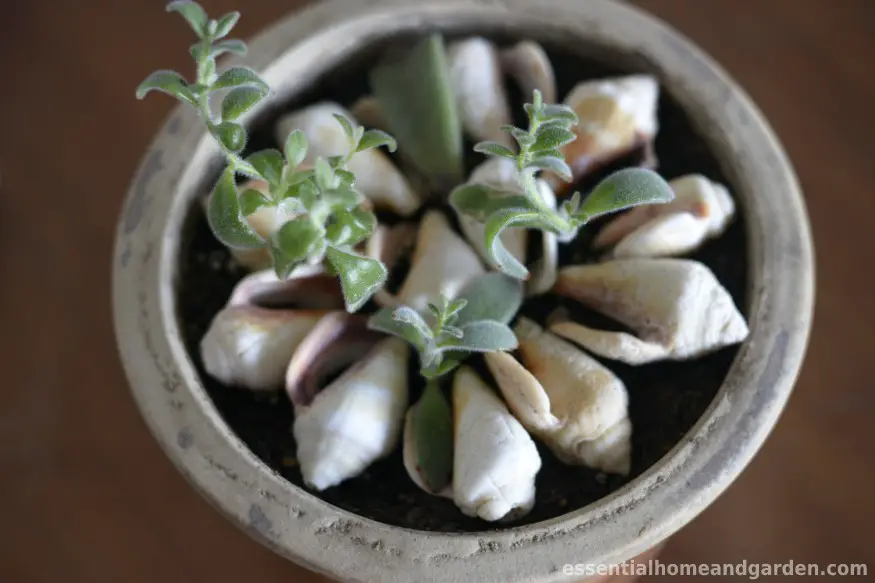
Succulent potting mix needs to be well-draining, which typically involves using perlite, but many people don’t like the look of perlite on the surface of the soil in their pot.
One solution is to use a different kind of gritty amendment in your potting mix (for example, pebbles or pumice, which are more gray than white).
Another solution is to use mulch.
Broadly defined, mulch is anything you use to cover the top layer of soil, whether for insulation, nutrition, or merely aesthetic reasons. In the garden, most mulches are meant to enhance the soil (compost or shredded leaf mulch, for example), while in potted plants, the purpose is usually just to make them more attractive.
Common mulches used for houseplants include pebbles, bark, sand, or decorative moss. The risk of these options is that they can trap water in the soil. While that benefits some plants, it can be harmful to succulents, which like to go through a wet-dry cycle instead of staying moist.
Note: We recommend avoiding moss and bark, but a thin layer of sand, coconut coir, or peat is okay (although perlite may eventually migrate upward through the top layers).
The best option is to use a chunkier mulch that allows enough open soil for adequate evaporation. You can do this with a single layer of pebbles or stone.
Don’t stack them. You should be able to see a little soil here and there in the mouth of the pot. My personal favorite is to use a single layer of seashells or sea glass. They are irregularly shaped, so they let plenty of air and evaporating water through.
Containing Your Enthusiasm For Succulents
Whatever your aesthetic is, there is a perfect pot for your succulent. Figure out a drainage strategy, whether that’s using a pot with holes, making your own, using a pot in a pot, or planning to be extremely attentive to your plant’s individual watering needs. With that squared away, you can make nearly any pot work.

